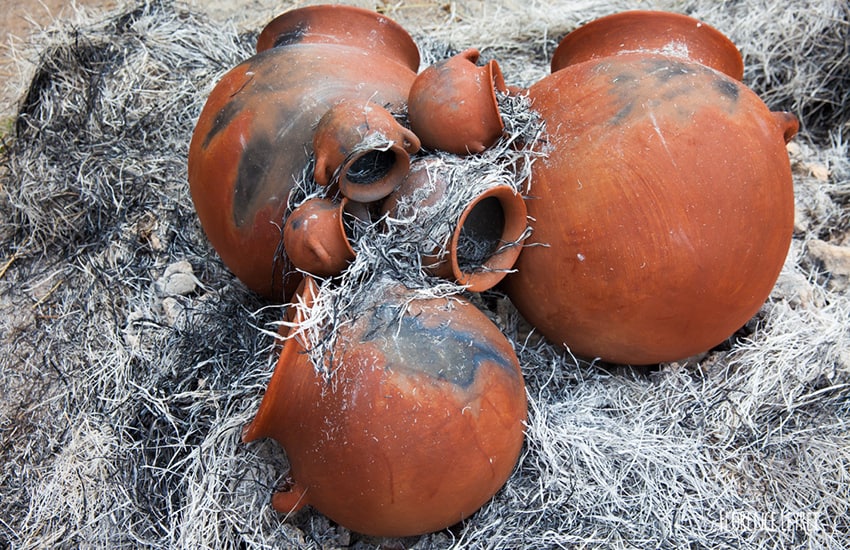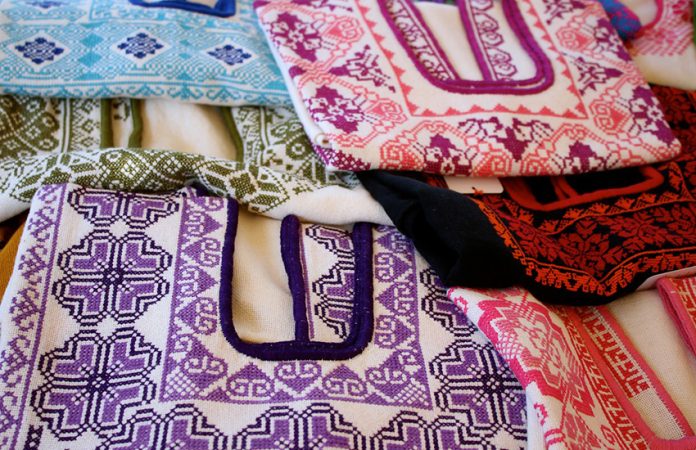“They are some of my favorite craftspeople because they are a cooperative in the truest sense of the word. … they work together as a team trying to help each other,” says Terry Baumgart, an expert in Michoacán crafts for the Feria Maestros del Arte.
Baumgart is talking about two interconnected cooperatives in the tiny community of Zipiajo in central Michoacán. Those in the Cuanari group focus on textiles, and those in the Alfarería de Zipiajo Nana Elvia group focus on pottery.
Although handcraft production is important all over the state of Michoacán, it is particularly important for Zipiajo. Although located between Lake Pátzcuaro and the highway to Guadalajara, winding roads among cornfields means that it takes two hours to get there from the tourist towns of the lake.
This isolation means that the town has preserved a traditional way of life. Purhépecha is still spoken here, and it is known for its festival in honor of an image of the infant Jesus with many miracles attributed to it.
The driving force behind the development of Zipiajo’s crafts is María Elvia Silvia Bartolo, who has been organizing and promoting the tiny town’s crafts for over three decades.

Her work has borne fruit: Zipiajo pottery is one of 13 crafts with designation-of-origin status, the same that tequila and Talavera pottery have.
The cooperatives have worked with the federal handcraft agency Fonart to formalize their businesses, including the creation of labels and catalogs. This work is even more impressive when you realize that many of the artisans are not even able to read and write in any language.
Both crafts are recognized but in different ways. Zipiajo’s pottery style is recognized by federal and state cultural authorities, but it is their embroidered garments that have won prizes.
Cuanari means “morning light” in Purhépecha. Officially, all of these textile workers are women, but Baumgart states that at least one man has worked with them secretly.
Zipiajo textiles include blouses, men’s shirts, traditional aprons and more decorated in cross-stitch. Traditional embroidery designs come from the world the artisans know such as flowers and other elements of nature, which are stitched onto muslin cloth.
Some artisans are experimenting with bringing back old motifs such as deer (not seen in these parts for a long time) and images never used before such as cats.
They have also worked on creating finer versions of their embroidery, mostly by shrinking the size of the stitches allowing for finer details. Baumgart says such dresses go for about US $200. One she owns gets her “stalked” by envious women at handcraft events.
Embroidered garments have brought the town fame through winning handcraft competitions. One of the rather unique aspects of this group is that when one member wins prize money for a crafted item, one half goes to the winner with the other half shared among other members.
The potters are organized under the name of Alfarería de Zipiajo Nana Elvia (Zipiajo Pottery of Grandma Elvia), named after the maestra who has been so instrumental for artisans here.
Zipiajo pottery is a very simple and rustic type — not in the sense of poorly made, quite the opposite — but rather in that it lacks shiny glazes or detailed decoration.
Made from local ochre clay, Zipiajo pottery has been entirely utilitarian: pots, comales (grills for cooking tortillas) and dishes. Firing is done above ground after wood and other combustibles (including dung) have been heaped into the mound of green pottery. Despite modern pressures, including deforestation, maestra Elvia insists on firing the old way, explaining that she promised this to the town elders more than 30 years ago when she began.
The result is a matte ochre color with capricious permanent black smudges. Despite its historical importance, and strong appeal to a certain segment of collectors, these wares are rarely put into competition with Michoacán’s more ornate pottery traditions.

That does not mean Zipiajo pottery has not experienced change. The cooperative has been working for some time on options to appeal to markets outside the local area.
Most of these have included pots with simple decorative features, particularly animals, as well as stand-alone animal figures such as deer, rabbits, turtles, squirrels and more. These have the same ochre/black smudge finish as they are created the same way.
The artisans of Zipiajo have been supported not only by Mexican handcraft authorities but by the nonprofit organization Feria Maestros del Arte in Chapala, Jalisco. They have been invited to participate multiple times in the annual event in November (before the pandemic) and are part of the organization’s online efforts as well. Their page right now has only textiles, but the site is being revamped. They can also be found by contacting Baumgart.
However, the transition to online sales has not been easy. They are isolated, and their only way to take advantage of the internet is through one member’s godson, who owns a tiny cybercafe and volunteers to send photos and other information to the Feria organization.
Leigh Thelmadatter arrived in Mexico 18 years ago and fell in love with the land and the culture in particular its handcrafts and art. She is the author of Mexican Cartonería: Paper, Paste and Fiesta (Schiffer 2019). Her culture column appears regularly on Mexico News Daily.
